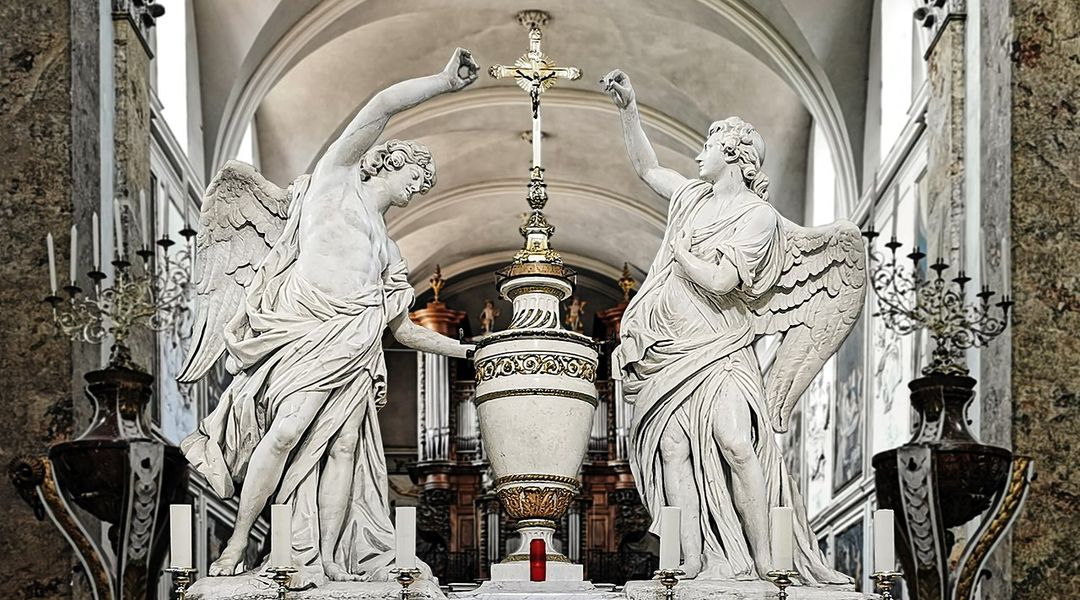Are churches really seeing more theft? For several years, media outlets have
regularly reported break-ins and robberies targeting Christian places of
worship. On March 14, an offering was stolen during lunchtime from a church
near Narbonne, a town in southern France. In January, a couple in their 50s was
caught in the act of stealing from a parish in the southern French Gard
region—they had been regularly dipping into the donation box for months. A
month earlier, a church in Bordeaux in southwestern France was hit: the
chapel’s safe was broken into and its candle offering box emptied. Back in
September 2024, a parish in Seine-Saint-Denis in the Grand Paris metropolis was
robbed during Mass, with the collection—an estimated $2,900—vanishing.
These are just a few examples that point to a troubling pattern. “In 2022,
we recorded 630 thefts at Christian places of worship—including churches,
chapels, monasteries, and convents,” said Col. Marie-Laure Pezant, spokesperson
for France’s national gendarmerie. “That number rose to 740 in 2023 and 780 in
2024—a 24% increase over two years.”
“However, it’s important to keep things in perspective,” she added. “This
remains a relatively small number when compared to the total number of
Christian sites—and especially to the 150,000 burglaries reported across France
in 2024 alone.” France is home to more than 40,000 churches and chapels.
According to Europe 1 radio
station, citing intelligence from the national police,
thefts inside religious buildings rose to 288 in 2024, up from 270 the previous
year—a 7% increase. Some regions are more affected than others, notably
Nouvelle-Aquitaine in southwestern France,
Île-de-France, the region surrounding Paris, and Grand Est, which
borders Germany, Luxembourg,
Belgium,
and Switzerland.
Chalices, candlesticks, statues, paintings, vases, and offertory cash—all of
it seems to attract thieves. “It varies widely, so it’s hard to estimate the
total losses,” Col. Pezant said. Some churches and cathedrals house valuable,
historically significant objects. According to a 2023 report from the Ministry
of Culture on theft, damage, and recovery of items protected as historical
monuments, most stolen or missing classified objects were taken from religious
buildings.
Organized criminal networks
Religious artifacts are attractive targets. “They’re considered safe
investments,” Pezant explained. “There are many channels to resell them, and in
some cases, objects are melted down because of the high value of their metals.”
The gendarmerie identifies several types of perpetrators. “Sometimes, it’s
lone opportunists exploiting unlocked churches—but that’s not the norm. More
often, it’s organized groups targeting specific items, or individuals who hit
several churches, then export or resell the goods through different networks.”
The French Bishops’ Conference (CEF) is taking the issue seriously and works
closely with the Interior Ministry, particularly with the Central Office of
Religious Affairs. “We receive monthly reports not only on thefts, but also on
vandalism and even assaults,” said a CEF representative. “Solutions clearly lie
in implementing better security measures to protect places of worship.”
Cataloging sacred objects
To help parishes secure their spaces, the National Gendarmerie offers
security advisors. “They can recommend keeping churches locked outside of Mass
times, installing security cameras—especially in cathedrals or places with
valuable items—organizing volunteer patrols, or bolting down paintings and
statues,” said Pezant. These suggestions are especially relevant for churches
that remain open all day.
Authorities are also urging parishes to keep detailed records of their
artifacts. “Take photographs, document the materials, the date of purchase or
creation, the artist’s name, serial numbers, and any marks or damage,” Pezant
advised. “There are also commercial tagging solutions—like invisible stickers
or patches—that can leave a hidden mark on the object. These make it easier to
positively identify items if they’re recovered.”
However, theft isn’t the only rising threat. Churches are also facing a surge in
attempted break-ins and arson attacks. Nearly 50 fires were reported in 2024—up
30% from the previous year.
